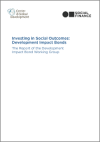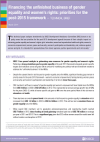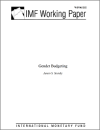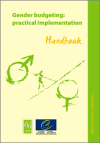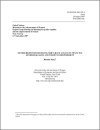Paper discussing the definition and measurement of Sustainable Development Goal (SDG) Indicator 5.c.1. (reclassified to Tier II) and comparing Indicator 5.c.1 with other SDG fiscal indicators.
FOUND 32
This practical guide by Debbie Budlender and Guy Hewitt, based on experiences of past gender budget initiatives, provides a comprehensive outline of how to engender budgets.
This note provides an overview of existing gender equality markers and reviews issues relating to the tracking and monitoring of investments related to gender equality and women’s empowerment.
This technical paper analyses investments by OECD Development Assistance Committee (DAC) donors in six policy areas that are priorities for the post-2015 development agenda because of their catalytic impact on achieving gender equality and women’s rights: girls’ education; sexual and reproductive he
This IMF Working Paper examines how public processes can contribute to improving women's status. Gender budgeting, which refers to the systematic examination of budget programs and policies for their impact on women, has been tried in a range of countries in recent years.
The focus of this publication is to act as a guide to the practice of gender budgeting. It is not a first-step book. There are many publications which articulate the rationale for, the background to and the history of gender budgeting.
This Commonwealth Secretariat publication provides a conceptual framework for work on gender responsive budgets, traces the evoluation of work in this area and provides information on country initiatives. This is a crucial resource for researchers, policy-makers and practitioners.
The guidance note sets out commom principles and standards for gender equality markers systems that track and report on allocations and expenditures for gender equality and women's empowerment.
This paper uses examples from Australia and the Pacific Island Countries and Territorities to address the following questions:How can we assess a government's achievements in gender responsive budgeting? How can gender responsible budgeting be made sustainable in the face of change?
This paper provides guidance on how to make Public Finance Management (PFM) reforms gender responsive. It presents an overview of PFM reforms and explains how and why they are important to the achievement of gender equality outcomes.
